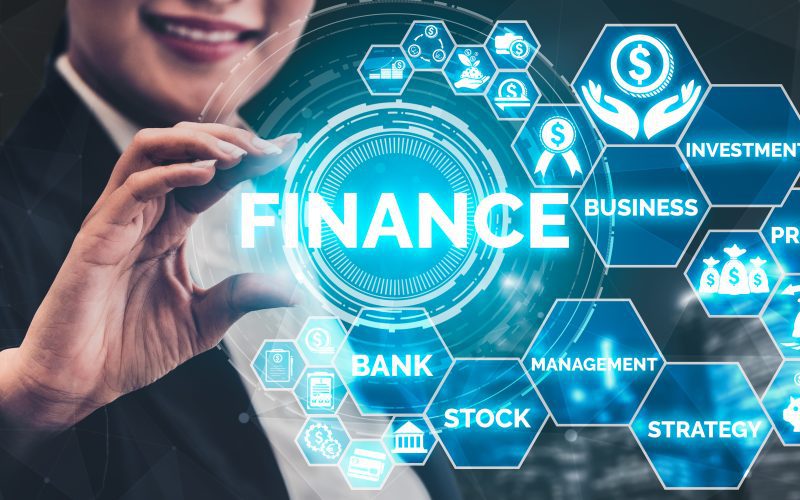Blockchain technology is reshaping numerous industries, and one of the most Traditional Banking significant sectors being affected is traditional banking. The rise of blockchain is transforming the way banks operate, introducing greater security, transparency, and efficiency into financial services. This article delves into the impact of blockchain on the banking sector, examining how it disrupts traditional practices, what benefits it offers, and the challenges it poses.
Introduction
Traditional banking systems have been the cornerstone of the financial world for centuries. These systems are, however, increasingly facing competition from technological innovations, particularly blockchain technology. Blockchain, a decentralized and secure system, is fundamentally changing the way we think about banking, finance, and money transfers. By eliminating intermediaries and providing faster, more secure transactions, blockchain is creating new possibilities that challenge conventional banking.
What is Blockchain Technology?
Blockchain is a distributed ledger technology that stores data across multiple computers in a decentralized manner. It ensures that transactions are secure, transparent, and immutable (meaning they cannot be changed or tampered with). Each block in the chain contains transaction data, and every transaction is verified by multiple nodes (computers) in the network before being added to the ledger.
The security and transparency provided by blockchain make it an attractive option for financial institutions that need to handle large volumes of transactions while ensuring the safety and accuracy of financial data.
Blockchain’s Impact on Traditional Banking

Blockchain is fundamentally altering the way traditional banking systems operate by offering a more streamlined, efficient, and secure process for transactions. Here are some of the most significant ways blockchain is disrupting traditional banking:
1. Elimination of Intermediaries
One of the most notable changes blockchain brings to banking is the reduction, or even elimination, of intermediaries such as clearinghouses and payment processors. Traditionally, banks rely on these intermediaries to verify and process transactions, but blockchain allows direct peer-to-peer (P2P) transactions, making the process faster and cheaper.
2. Faster Transactions
Traditional cross-border transactions can take days to settle due to the number of intermediaries involved. Blockchain technology, however, allows for near-instantaneous transactions, cutting down processing times from days to minutes. This speed benefits both consumers and banks by reducing the time and resources required for transaction verification.
3. Increased Transparency and Security
Blockchain’s decentralized nature makes it nearly impossible for any single entity to manipulate the data. Every transaction is visible to all participants, ensuring full transparency. Additionally, because the blockchain is immutable, fraudulent activities are much harder to execute, making banking systems more secure against cyberattacks.
4. Lower Operational Costs
Traditional banking involves significant costs for managing operations, maintaining IT systems, and facilitating transactions through intermediaries. By implementing blockchain, banks can reduce these operational costs as the need for third parties diminishes, leading to greater cost efficiency for both financial institutions and customers.
5. Smart Contracts
Smart contracts are self-executing contracts where the terms of the agreement are directly written into code. Blockchain-based smart contracts allow banks to automate processes such as loan issuance, ensuring that terms are fulfilled without the need for manual intervention, which reduces errors and accelerates processes.
Key Benefits of Blockchain Banking
The adoption of blockchain in banking presents a range of benefits that go beyond just improving transaction speeds or reducing costs. Here are some key advantages:
1. Enhanced Security
Blockchain technology is virtually tamper-proof, providing a high level of security compared to traditional systems. It uses cryptographic techniques to secure transactions, making it highly resistant to fraud and hacking.
2. Greater Efficiency
Banks can significantly streamline their operations by using blockchain, cutting down on the time and resources needed to process transactions, settle trades, and complete other routine tasks.
3. Improved Transparency
Since all transactions on the blockchain are visible to every participant in the network, it enhances transparency, which builds trust between banks and their customers. Every action can be traced, minimizing the risk of corruption or fraudulent activities.
4. Reduced Costs
Without intermediaries such as payment processors, blockchain drastically cuts down on transaction costs. This allows banks to offer more competitive services to customers, like lower fees for international transfers.
Challenges and Concerns for Blockchain in Banking
Despite the advantages, the integration of blockchain into banking faces several hurdles. These include:
1. Regulatory Uncertainty
One of the biggest challenges facing blockchain adoption in banking is the lack of clear regulations. Governments and financial regulatory bodies are still grappling with how to regulate blockchain-based systems, especially with concerns about compliance, data privacy, and anti-money laundering (AML) laws.
2. Scalability Issues
While blockchain is effective for smaller transactions, its current structure struggles with scalability. Processing a large volume of transactions in a timely manner remains a challenge, especially as more institutions adopt blockchain.
3. Energy Consumption
Blockchain networks, particularly those that use proof-of-work consensus mechanisms (such as Bitcoin), are energy-intensive. This raises concerns about sustainability and the environmental impact of blockchain adoption in banking.
4. Public Perception and Trust
Many customers still have limited understanding of blockchain technology. To ensure wide adoption, banks will need to educate their customers and build trust in blockchain-based systems.
Comparative Analysis of Blockchain Banking vs. Traditional Banking
| Aspect | Blockchain Banking | Traditional Banking |
|---|---|---|
| Transaction Speed | Near-instant (minutes) | Slow (days, especially for cross-border) |
| Security | High (decentralized, cryptographic security) | Moderate (centralized, prone to cyberattacks) |
| Transparency | Complete transparency (open ledger) | Limited (restricted to financial institutions) |
| Operational Costs | Lower (no intermediaries, reduced manual work) | Higher (intermediaries, manual processing) |
| Intermediaries | None or minimal | Multiple intermediaries |
| Smart Contracts | Yes, automated through code | No, requires manual oversight |
| Regulatory Environment | Uncertain, evolving | Well-established and regulated |
| Adoption | Still emerging, growing | Established and widely used |
The Future of Blockchain in Banking
The future of blockchain in banking appears promising, with the technology continuing to evolve and gaining wider acceptance. Central banks and financial institutions are exploring the potential of blockchain to create digital currencies, streamline settlement processes, and improve security measures.
However, for blockchain to fully integrate into the global banking system, certain issues need to be addressed. These include regulatory frameworks, scalability solutions, and more energy-efficient consensus mechanisms. With advancements in these areas, blockchain is set to revolutionize banking further in the coming years.
How Blockchain Enhances Customer Experience
One of the key advantages of blockchain banking is the improved customer experience it provides. Traditional banking often involves lengthy processes, cumbersome paperwork, and long waiting times, particularly for services like loan applications or international transfers. Blockchain simplifies and automates many of these processes, allowing customers to complete transactions quickly and without the need for excessive documentation. Furthermore, blockchain enables banks to offer 24/7 service availability, allowing customers to access banking services at any time, without being constrained by typical business hours. This convenience can lead to greater customer satisfaction and loyalty.
Blockchain’s Role in Anti-Fraud Measures
Fraud remains a significant issue in traditional banking systems, with billions of dollars lost each year to fraudulent activities. Blockchain’s decentralized and transparent structure offers enhanced fraud prevention by making it much harder to alter records or conduct unauthorized transactions. Every transaction on the blockchain is cryptographically secured, and once added to the ledger, it is immutable—meaning it cannot be changed or deleted. This level of security provides greater assurance to both banks and customers that their assets are protected, reducing the risk of fraud and boosting trust in financial institutions.
Digital Identity Management in Blockchain Banking
One area where blockchain banking could revolutionize the industry is through digital identity management. Traditionally, identity verification involves multiple steps and third-party services, which are not only time-consuming but also vulnerable to identity theft. Blockchain allows for the creation of secure, digital identities that can be verified quickly and easily. These digital identities are stored on a distributed ledger, making them highly secure and accessible across multiple platforms. This technology could enable faster onboarding processes for new customers, more secure verification for online banking, and even simplified cross-border compliance with Know Your Customer (KYC) regulations.
Blockchain and Decentralized Finance (DeFi)
Decentralized finance, or DeFi, is an emerging trend within blockchain banking that further challenges the traditional banking model. DeFi allows individuals to borrow, lend, and trade assets directly without relying on centralized financial institutions. Through smart contracts, DeFi platforms enable these transactions to occur autonomously, removing the need for banks to act as intermediaries. While DeFi is still in its infancy, its rapid growth indicates a shift toward a more decentralized financial system where individuals have greater control over their financial assets. This trend could potentially reshape the role of traditional banks in the future, forcing them to adapt or risk becoming obsolete.
The Role of Central Bank Digital Currencies (CBDCs)
In response to the growing influence of blockchain, many central banks are exploring the idea of issuing Central Bank Digital Currencies (CBDCs). These digital currencies, built on blockchain technology, would function as legal tender and be backed by a central bank. CBDCs aim to combine the benefits of blockchain, such as faster and more secure transactions, with the stability of a central bank-issued currency. Several countries, including China, Sweden, and the Bahamas, have already begun piloting CBDC programs. If successful, CBDCs could further accelerate the adoption of blockchain in banking and provide a bridge between traditional banking systems and decentralized finance.
Analysis Table: Impact of Blockchain on Banking Operations
| Area of Impact | Blockchain Advantages | Traditional Banking Limitations |
|---|---|---|
| Speed | Fast transaction times (minutes) | Slow processing, especially for cross-border |
| Security | Decentralized, cryptographically secure | Centralized, vulnerable to cyber threats |
| Cost Efficiency | Reduced costs due to fewer intermediaries | High operational costs with multiple layers |
| Transparency | Open ledger, visible to all participants | Limited visibility, internal to financial institutions |
| Trust | Immutable records, transparent transactions | Requires third-party verification, less transparency |
| Automation | Smart contracts for automated processes | Manual processes for contracts and settlements |
Conclusion
Blockchain technology is undoubtedly disrupting traditional banking by providing a faster, more secure, and cost-effective alternative for financial transactions. Although it faces challenges such as regulatory uncertainty and scalability issues, the potential benefits it offers to both banks and consumers make it a compelling innovation. As the technology matures and regulatory frameworks become clearer, blockchain has the potential to transform the global financial landscape.












